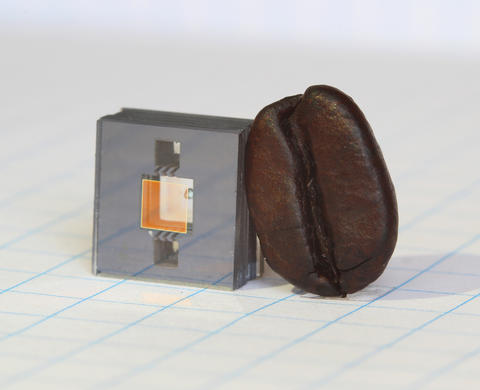Physicists at the National Institute of Standards and Technology (NIST) and partners have demonstrated an experimental, next-generation atomic clock—ticking at high “optical” frequencies—that is much smaller than usual, made of just three small chips plus supporting electronics and optics.
Described in Optica, the chip-scale clock is based on the vibrations, or “ticks,” of rubidium atoms confined in a tiny glass container, called a vapor cell, on a chip. Two frequency combs on chips act like gears to link the atoms’ high-frequency optical ticks to a lower, widely used microwave frequency that can be used in applications.
The chip-based heart of the new clock requires very little power (just 275 milliwatts) and, with additional technology advances, could potentially be made small enough to be handheld. Chip-scale optical clocks like this could eventually replace traditional oscillators in applications such as navigation systems and telecommunications networks and serve as backup clocks on satellites.
We made an optical atomic clock in which all key components are microfabricated and work together to produce an exceptionally stable output,” NIST Fellow John Kitching said. “Ultimately, we expect this work to lead to small, low-power clocks that are exceptionally stable and will bring a new generation of accurate timing to portable, battery-operated devices.”
The clock was built at NIST with help from the California Institute of Technology (Pasadena, Calif.), Stanford University (Stanford, Calif.) and Charles Stark Draper Laboratories (Cambridge, Mass.).
Standard atomic clocks operate at microwave frequencies, based on the natural vibrations of the cesium atom—the world’s primary definition of the second. Optical atomic clocks, running at higher frequencies, offer greater precision because they divide time into smaller units and have a high “quality factor,” which reflects how long the atoms can tick on their own, without outside help. Optical clocks are expected to be the basis for a future redefinition of the second.
Read more: EXPERIMENTAL NEXT-GENERATION CHIP-SCALE ATOMIC CLOCK

